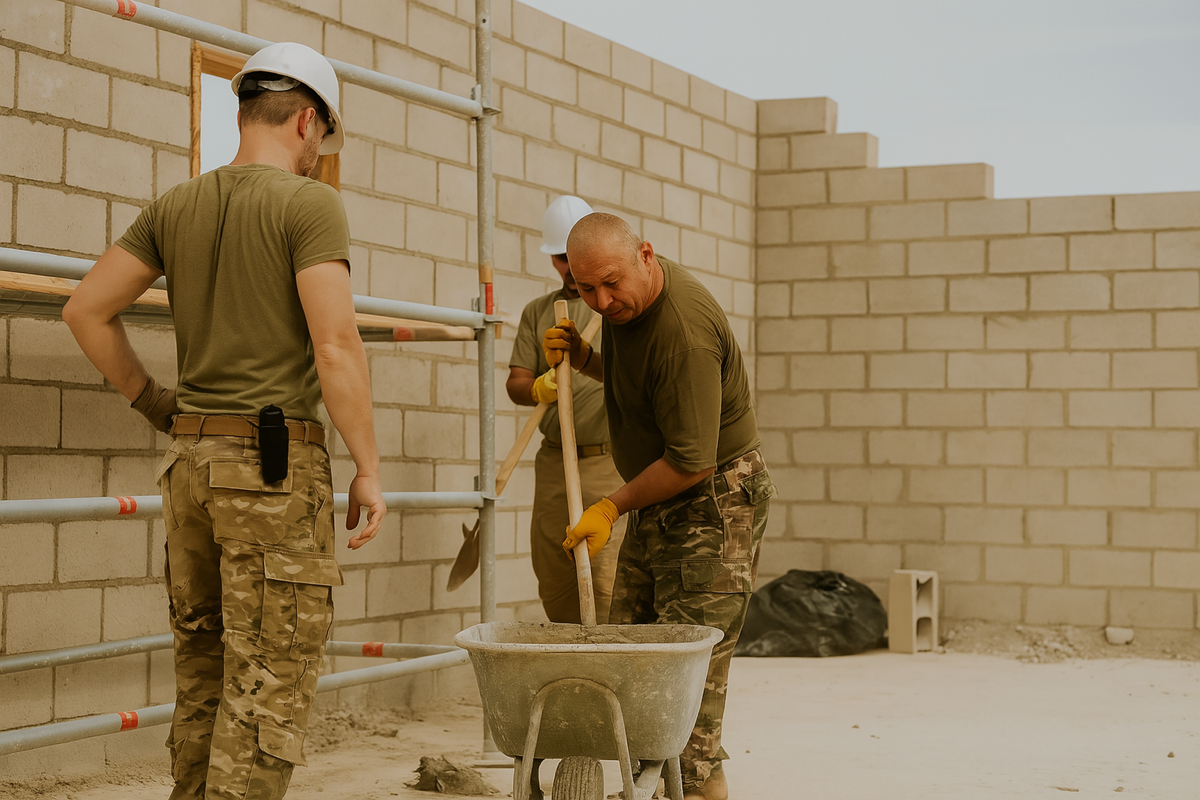
If you’ve been around Arizona construction long enough, you’ve seen it: leaning walls, cracked mortar, uneven joints, or block walls that don’t hold up after just a few monsoons. These issues aren’t just ugly — they lead to costly repairs and failed inspections.
At Blue Collar Masonry, we’ve been called in to fix more jobs than we care to count. In almost every case, the root cause was one of a handful of preventable mistakes. Here are 5 of the most common masonry errors we see across Phoenix, Mesa, and surrounding areas — and how to avoid them.
⸻
One of the most common issues starts before a single block or brick is laid: the footing.
Arizona’s soil expands and contracts with temperature and moisture. If your footing isn’t deep enough or wide enough, your entire wall can shift, crack, or settle unevenly. We’ve seen projects fail simply because the contractor tried to save time on excavation.
How to avoid it:
Use soil-specific footing depths and widths. In most Arizona builds, footings should be 16–24 inches deep depending on soil conditions and wall height. Always reinforce with rebar and ensure proper curing before laying block.
⸻
Mortar isn’t one-size-fits-all. If it’s mixed too dry, it won’t bond properly. If it’s too wet, it won’t hold shape. In Arizona heat, it can also dry too quickly before full adhesion, especially if not mixed and applied with precision.
Bad mortar leads to weak joints, crumbling lines, and water intrusion — especially during monsoon season.
How to avoid it:
Use the right mortar type for the job (usually Type S or Type N for block and brick veneer). Mix in the shade when possible and keep water-to-cement ratios consistent. Use an experienced mason who knows how to adjust based on heat, humidity, and material.
⸻
You can spot a bad masonry job from the street — crooked rows, uneven spacing, or joints that look rushed and sloppy. Even with the right materials, bad layout ruins the visual and structural integrity of the wall.
This usually comes from poor string-line setup, inexperienced crews, or trying to lay too fast without checking level and spacing.
How to avoid it:
Use a string line every row, double-check levels regularly, and take your time on layout. This is especially important on long runs, curved walls, and corners. Skilled masons don’t rush layout — they dial it in before moving on.
⸻
Arizona’s dry climate is deceptive — when it rains, it floods. Walls without proper drainage behind them or expansion joints in the right places are doomed to fail. Hydrostatic pressure builds up, water gets trapped, and block can start to bow, crack, or shift.
How to avoid it:
Always plan for water. Use weep holes, gravel backfill, and waterproof membranes where needed. Expansion joints should be used on longer walls and at structural changes. Every job needs a plan — not just a quick install.
⸻
The biggest mistake? Hiring the cheapest crew on the bid sheet.
We’ve seen “masonry companies” with no license, no insurance, and no idea what they’re doing. You might save a few bucks up front, but fixing a failed wall or ripped-off veneer costs 5x more in the end.
How to avoid it:
Work with licensed, experienced, and insured crews that specialize in Arizona masonry — not general handymen. Ask to see past projects. Read reviews. Don’t base your decision on price alone.
⸻
Build It Right the First Time
Masonry done right will outlast almost every other part of your property. Done wrong, it’ll start falling apart before the paint dries.
At Blue Collar Masonry, we’ve spent years refining every phase of the process — from layout and mix to finish and cleanup. Whether you’re building a block wall, a brick entry, or a full veneer wrap, we build it to code and built to last in Arizona’s toughest conditions.
⸻
Don’t take chances with your build.
Contact Blue Collar Masonry and get it done right — the first time.